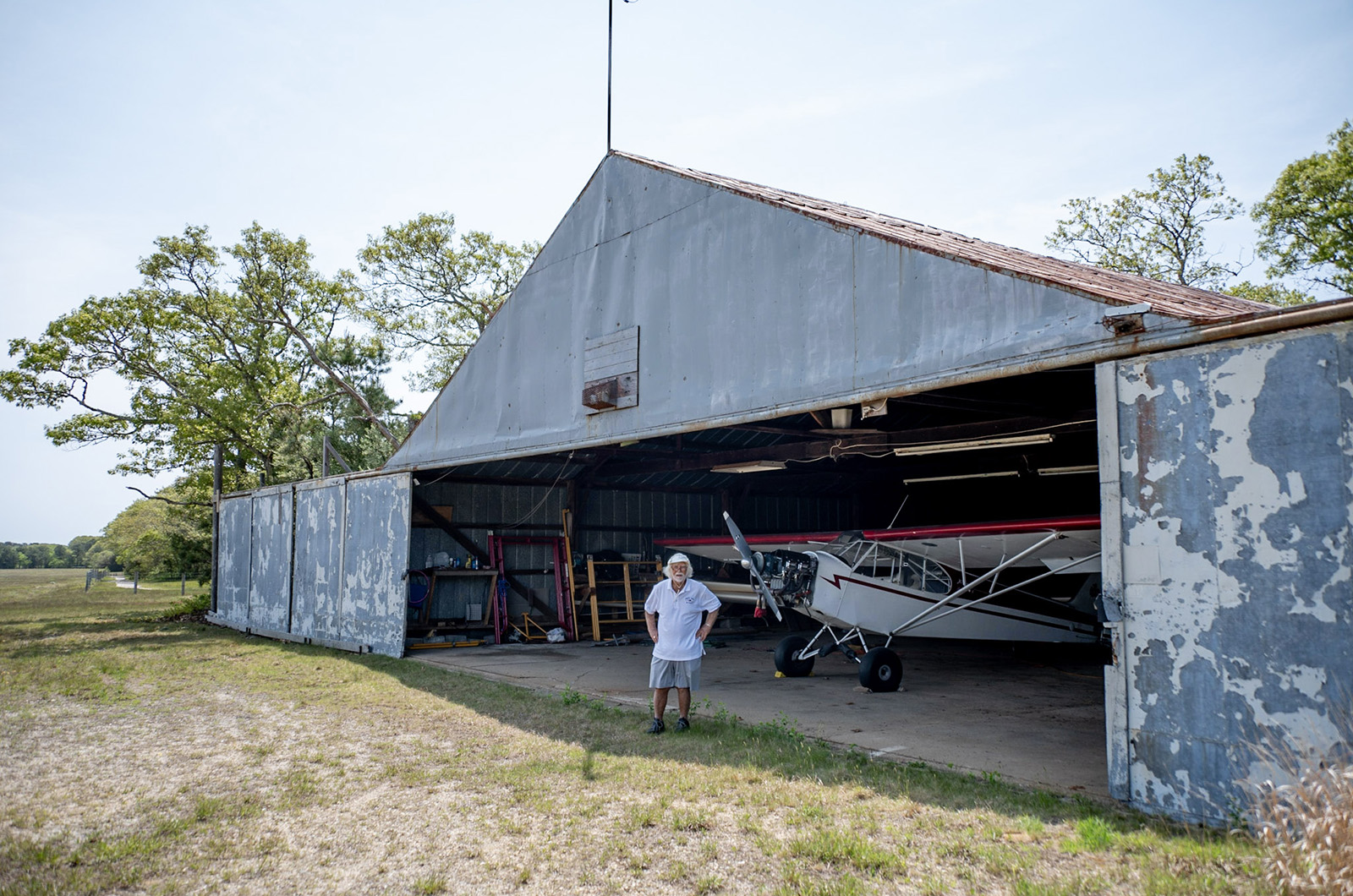Father Michael Nagle’s face is a familiar one on-Island, having led the Good Shepherd Parish for nearly three decades. Now retired from religious life, that familiar face is affixed to a place that’s a little less known.
For more than 20 years, Father Nagle has retained a position as the aeronautical gatekeeper to the Trade Wind airfield, the third busiest landing strip on Martha’s Vineyard. Though he says the work involved is minimal, Father Nagle cherishes his role as protector of the antique airfield.
“It’s a real treasure for the Island and for the town, and people who appreciate that old style of flying” he said, in an interview with the Gazette.
Unlike most airports, any qualified pilot with permission from Father Nagle can land there, any time, without notice. A walker could easily traverse the 71.8-acre Oak Bluffs property without any idea that it was an active airfield. It is only by chance that a hiker will encounter Father Nagle, the airfield’s facilities manager, standing beside his light sport airplane Yellowbird.
“There’s getting to be less and less grass fields all over the country,” he said. “The Island actually has two.”

While the more famous Katama Airfield might get 30 plane landings on a summer day, Trade Wind gets far fewer. Seldom do more than 50 pilots get a permission to land there each year, and the number of annual landings is anyone’s guess.
Despite its humble size, the property’s history is extensive, going back its 1800s origin as the Chase family dairy farm. Antone Sanchos, a farmer and aviation enthusiast who opened the first on-Island airplane repair shop, bought the land in 1939. Once used as a pasture, he cleared a landing strip and dubbed it the Oak Bluffs Airport.
The field’s current name came from his successors, Carolyn Cullen and Rachael Williams, who founded the Trade Wind Flying Service and leased the field in the late 1940s. Both had strong airborne bona fides: Ms. Cullen served in the World War II Women’s Airforce Service Pilots (the Wasps) while Ms. Williams, too short to join the Wasps, was as a wartime airport clearance officer.
The pair met in the 99s club, an organization of women pilots founded by Amelia Earhart, and lived together in a Quonset hut by the airfield. They hosted many flying dignitaries over the years, from original 99s members to early test pilot August “Gus” Graf.
One of Ms. Cullen’s flight students, Joseph Costa, succeeded Ms. Cullen as field manager in 1989. The same year, the land bank purchased the property for $2.75 million. It was the nonprofit’s most expensive purchase to date.
Father Nagle took over in 2002, in an interim position that stretched into permanence. “It’s a real bit of Americana – a great little airport, and a lot of people learned to fly there,” he said, in a Gazette article, that year.
The rugged character of the runway, he said earlier this month, is a draw for a certain breed of pilot.
“First you have to think, ‘Is my airplane capable of taking off over trees on 2,000 feet of grass?’” he said.
Some pilots use the strip for touch-and-gos, briefly landing and taking off again as practice. Most of the landings, however, are spontaneous.
“A lot of pilots will say ‘Oh, it’s a beautiful day, we should fly down to Trade Wind, I just got permission to land there,’” Father Nagle explained, adding that the nearby Farm Neck golf course is a big draw.
But many walkers at Trade Wind might stay blissfully unaware of its active airfield status, if they do not chance upon a landing. This is why Father Nagle often lingers there, with Yellowbird, to regale those Islanders less airborne than he.
“I like to stand out there with my plane now and then, and tell people about the field,” he said.







Comments (14)
Comments
Comment policy »